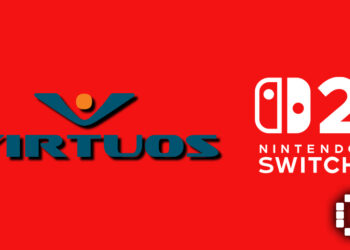This article on ‘Mobile Adaptations of Console Games Are Getting Far Better’ was available a week earlier through the Gamerbraves Newsletter.
Sign up for free to gain access to more articles about news and trends in the gaming industry and community.
Original Article
Mobile games are a big business nowadays. Even the worst of titles can still rake in a good income but ever since the platform exploded back in the early 2010s, bigger game publishers have asked the same questions: how do we take our popular IPs and bring them to mobile?
It’s a question that has been answered in multiple ways over the years, from bad ports to awkward spin-offs but in recent years we’ve gotten attempts with far more effort and authenticity to capture what makes the console versions so good.
Console IPs on Mobile
I remember when Apple first launched the iPhone and opened up The App Store. It was a gold rush of weird and wonderful apps trying to become the next big thing and some of the most interesting games on the store were those from big IPs. Did you know Resident Evil 4 used to be on mobile? Well, don’t get too excited. The game had to be heavily altered to fit onto the lower memory and lower power of mobile devices at the time and ended up looking like this:
It’s not bad but between the low resolution, lack of cutscenes, and well, lack of most of the game really, it wasn’t exactly a faithful recreation of its console counterpart. A lot of early mobile ports were like this. They were often watered-down versions of the full game or a smaller arcade-style title meant more to complement the main series. Series like Marvel Vs Capcom, Metal Gear Solid, and Final Fantasy all threw their hat in the ring to mixed results.
The main reason for this was that the mobile gaming ecosystem was, and still is, very different from those of console games. Games on the app store are often released for free, with in-app purchases as opposed to an upfront charge. Smartphones also don’t have buttons and games that rely too much on virtual buttons can often feel cluttered or uncomfortable.
Furthermore, mobiles didn’t have the best graphics capabilities back in the early days nor did they have controller pairing. As such, simply porting games onto the App Store wasn’t going to net results, and in time many of these early experiments have been taken down.
The real success stories at the dawn of mobile were games like Angry Birds, Cut the Rope, or Plants vs Zombies. These were simpler arcade-style games that made use of easy-to-understand touch and swipes to move the characters. From here on, the goal seemed to be to combine the accessible nature of these mobile originals with the greater variety of gameplay seen in console experiences.
Mobile Spin-offs
By the mid-2010s, the AAA publishers began rolling out new titles that took more advantage of how mobile games were designed. One of the earlier examples of these was with the endless runner genre. Games like Temple Run and Subway Surfers got popular by taking the platformer genre and making it easier to understand. The character’s now automatically run forward and the challenge comes from tapping and swiping at the right moment to push past obstacles. In time we saw Rayman, Sonic, and even Mario bring out similar games with high-quality graphics and level design in this style of gameplay.
In time, racing games, city simulation titles, and more would find ways to adapt to mobile to the point that many big companies saw these smaller titles as a major next step for their brand. PlayStation for example actually made another PlayStation All-Stars game but instead of being a fighting game, it was a mini-game collection with an Uncharted Temple Run clone. They weren’t all winners but it shows how big the trend was at the time.
Mobile Adaptations of First Person Shooters and MOBAs also really started taking off with big names like Call of Duty Mobile and League of Legends: Wild Rift. These latter two genres are particularly important, as their emphasis on multi-player, live service updates, and monetization schemes involving new gear, and costumes brought a greater layer of complexity to mobile gaming. This has come to a point where entire esports tournaments have sprouted up around them. Finally, we have the biggest genre to come out of mobile gaming in recent years.
Gacha Games
It was around the mid-2010s that we also saw the rise of gacha RPG games like Fate/Grand Order and Granblue Fantasy. These games took the simplicity of mobile gaming and combined it with the greater complexity of the RPG genre, alongside an incredibly lucrative monetization style of testing the RNG in hopes of getting cool new characters.
Gacha and hero collector games make up the majority of mobile games in the public discourse nowadays partially because they’re so malleable. They can be a variety of genres, as long as you have a cool cast of characters to collect and upgrade. A good example of this is Fire Emblem Heroes.
The game is able to use the many popular characters throughout Fire Emblem’s many titles and combine them with a more accessible version of the main series strategy RPG gameplay. It makes for a fun game that users can easily access while on the go. Not to mention, it brings in a high revenue to this day.
Even Closer To Consoles
In recent years, mobile games and particularly gacha have continued to expand even further with different genres and appeal more to console and PC players, on an international level. A big major title in this regard is the ever-popular Genshin Impact.
While Genshin isn’t based on a pre-existing IP, for all intents and purposes, it was a console game that was brought to mobile. While many mobile games tended to be smaller sprite-based, level-oriented titles, Genshin launched as an open-world action title with highly detailed and appealing character models. Its menu wasn’t cluttered with shops, and its story was filled with fully-voiced characters and cutscenes. The stereotypical image of mobile games as cheap looking and shallow in mechanics was firmly shattered.
The high popularity of Genshin has shown the potential mobile games have in creating more console-like experiences on mobile. You now have games like Nier Reincarnation, which while trading out the hack ‘n slash gameplay, was able to bring about the uniquely designed characters, music, and atmosphere of Yoko Taro’s works to the smaller screen.
Likewise the recently announced Persona: The Phantom X looks almost one-for-one with Persona 5 to the point where many people might not be able to tell the difference between the two. It’s also able to capture that same “one-more” battle system and social aspect of Persona 5. It also adds a whole new story with character designs by the series staple artist Shigenori Soejima. Despite being a mobile spin-off, it feels like the latest game in the series. As a fan, I’m pretty interested in checking the game out to see what comes next in Persona’s overarching story.
Closing Thoughts

To clarify, I don’t think these mobile spin-offs can act as a substitute for the main series of games on PC and consoles. As technology advances, however, they’re continuing the improve at faithfully adapting the experience of these series for mobile platforms.
Mobile games have come a long way from faulty Resident Evil ports and casual-oriented games like Angry Birds. They’ve even come quite a way from the 2D sprite-based gachas like F/GO and Fire Emblem Heroes. We now have almost console-level experiences that can span multiple genres complete with full story modes, voice acting, and character art from the original cast and crew.
This is important as mobile is easily the most accessible gaming platform there is right now. Not everyone can afford a console or high-end PC but everyone’s got a phone. These games can legitimately be many people’s first introduction to an assortment of beloved IPs and the fact that they can more faithfully replicate the main series’ experience means they’ll make an even better first impression.














![[ASIA EXCLUSIVE] Bringing Back a Classic: Inside the Making of FINAL FANTASY TACTICS – The Ivalice Chronicles](https://cdn.gamerbraves.com/2025/06/FFT-Ivalice-Chronicles_Interview_FI2-360x180.jpg)


![[EXCLUSIVE] Gearbox Executives Share Details on Borderlands 4 – Story, Weapons, and Lessons Learned](https://cdn.gamerbraves.com/2025/06/Borderlands-4_Interview_FI-360x180.jpg)
![[EXCLUSIVE] Wan Hazmer Reveals How No Straight Roads 2 Expands Beyond Vinyl City with Shueisha Games](https://cdn.gamerbraves.com/2025/06/NSR2_Interview_FI-360x180.jpg)
















